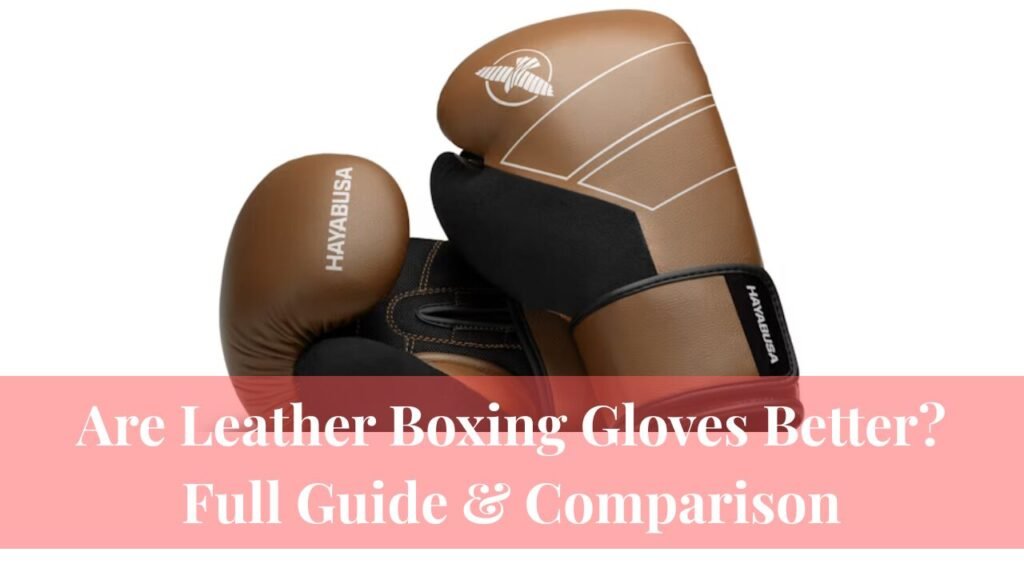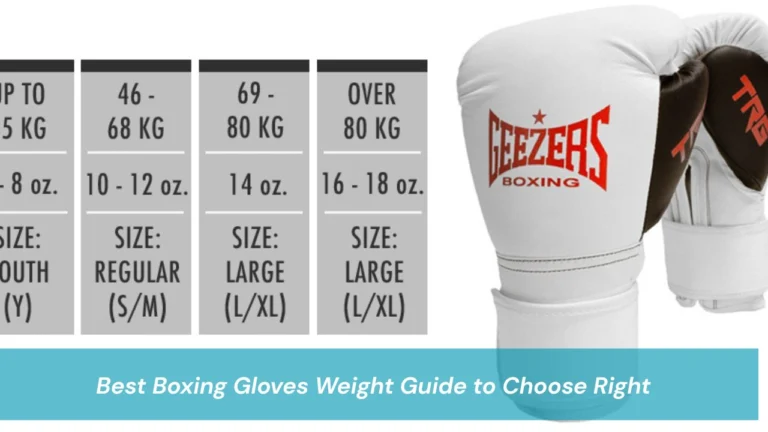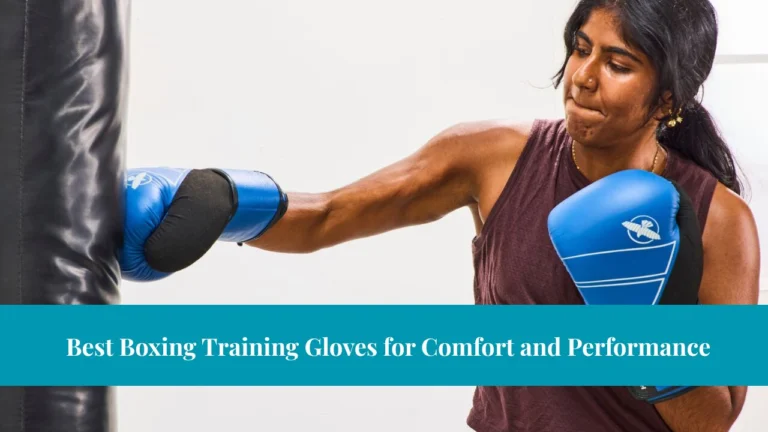In the world of boxing, equipment choices can significantly affect performance, safety, and long-term results. Among these, boxing gloves are arguably the most critical. While color, brand, and weight are important considerations, the material of the glove plays a foundational role in both comfort and performance. One question continues to spark debate: Are leather boxing gloves better than synthetic ones?
This comprehensive article addresses that question in depth, helping you understand how leather gloves compare to synthetic versions in terms of durability, comfort, protection, cost, aesthetics, and more. Drawing from expert insights, real-world experiences, and tested performance data, this guide will help boxers, trainers, and enthusiasts make informed decisions. We will also explore frequently asked questions, provide practical maintenance advice, and offer guidance on choosing the gloves that best suit your training style and long-term goals.
Why Leather Boxing Gloves Are Considered Better
Superior Durability and Longevity
Leather is renowned for its strength and resilience. Full-grain or genuine cowhide leather is naturally wear-resistant, making it ideal for athletes who train multiple times per week or engage in heavy bag work and sparring sessions. Unlike synthetic gloves, which can crack or peel over time, leather maintains its structural integrity and continues to provide optimal protection. The longevity of leather gloves makes them a wise investment, often lasting three to five years, even under intense daily use. This extended lifespan translates into a lower cost per use and more consistent performance throughout the glove’s lifetime.
Molded Fit and Improved Comfort
One of the standout advantages of leather gloves is their ability to mold to the unique contours of your hands. Over time, leather adapts, offering a fit that feels like a natural extension of the hand. This custom fit reduces hand shifting, minimizes fatigue during long sessions, and enhances control over each punch. Many professional boxers describe the sensation of wearing broken-in leather gloves as akin to a second skin. In comparison, synthetic gloves remain rigid and less adaptable, which can compromise comfort and precision during high-intensity training or competitive sparring.
Enhanced Ventilation and Odor Control
Leather is a naturally porous material, allowing better airflow inside the glove. This ventilation reduces heat accumulation and prevents moisture from being trapped, which is a common issue with synthetic gloves. Better airflow helps control sweating during intense workouts and minimizes the risk of foul odors and bacterial growth. Maintaining hygiene is particularly important in boxing, as gloves are in direct contact with hands for extended periods. Well-ventilated leather gloves, combined with proper maintenance, contribute to a healthier, more comfortable training experience and can even extend the overall lifespan of the gloves.
Wrist Support and Protection
High-quality leather gloves often feature double-stitched wrist cuffs and superior padding, providing enhanced stability and support. When paired with a secure Velcro strap or traditional lace-up closure, these gloves help prevent common injuries such as wrist sprains or hyperextensions. The combination of well-engineered padding and ergonomic wrist design allows for safer bag work and sparring, giving athletes confidence in both training and competition environments. Leather gloves provide a balance of protection and flexibility that is difficult to match with synthetic alternatives, particularly during rigorous, high-impact sessions.
Are Leather Gloves Worth the Cost?
It is true that leather gloves generally cost between $80 and $200, whereas synthetic gloves can be purchased for as little as $30. This price difference often leads beginners or casual boxers to consider synthetic options. However, evaluating gloves based on cost per use reveals that leather is often the more economical choice over time. For instance, a synthetic glove used for six months effectively costs around $5 per month, while a leather glove lasting three years can be calculated at roughly $3.33 per month. Beyond economics, the added comfort, better fit, and superior protection offered by leather gloves create value that synthetic gloves cannot match. For serious practitioners, investing in leather is not just a matter of luxury; it is a practical choice that enhances training quality and reduces long-term replacement costs.
Ideal Users for Leather Boxing Gloves
Leather gloves are particularly suited for professional boxers, amateur competitors, and frequent trainees who engage in three to five sessions per week. They are highly recommended for heavy bag and mitt work, as well as for those prioritizing comfort, wrist support, and long-term durability. Athletes aiming to advance in competitive boxing or even to maintain consistent, high-quality training routines will find leather gloves indispensable. The reliability and performance consistency of leather gloves make them an essential investment for anyone serious about their boxing journey.
When Synthetic Gloves Might Be a Better Fit
Despite the many advantages of leather, synthetic gloves still have a place, particularly for casual or beginner users who train infrequently. Youth boxers, who may outgrow gloves quickly, can benefit from affordable synthetic options that allow parents to manage costs. Shared gym environments also favor synthetics, as they are easier to clean and disinfect between users. Additionally, vegan athletes may prefer synthetic gloves for ethical reasons, avoiding animal products without compromising basic functionality. While synthetics may not offer the same long-term performance or molded fit, they provide a practical, cost-effective solution for specific needs and scenarios.
Leather Types and Their Quality: What to Know
Not all leather gloves are created equal, and understanding the types of leather can help buyers make informed decisions. Full-grain leather, which preserves the hide’s natural characteristics, is the highest quality, offering exceptional durability and comfort. Top-grain leather is sanded and treated to remove imperfections while maintaining a high-quality feel. Genuine leather, often made by gluing layers of processed hide, offers moderate performance, while split leather, derived from lower layers of the hide, is the least durable and less suitable for rigorous training. Premium brands such as Winning, Cleto Reyes, and Modest Vintage Player often utilize full-grain or top-grain leather to ensure long-lasting performance and consistent protection.
How to Identify Real Leather Gloves
In a market flooded with “leather-like” or “engineered leather” claims, distinguishing genuine leather from synthetic imitations is essential. Real leather can be identified by its texture, which is supple and slightly textured rather than overly smooth or plasticky. The natural scent of leather differs significantly from the chemical odor of synthetic materials. Tight, clean stitching is another indicator, as authentic leather gloves are carefully constructed to ensure durability. Additionally, reputable brands and realistic pricing are reliable signals; gloves that are too inexpensive to be genuine should be approached with caution. Following these criteria ensures you invest in a product that meets both performance and longevity standards.
Leather vs. Synthetic Gloves: The Key Differences
Understanding the distinctions between leather and synthetic boxing gloves is crucial for selecting the right pair. Leather gloves are crafted from natural hides such as cowhide or goatskin, known for their resilience and adaptability. Synthetic gloves, in contrast, are usually made from polyurethane (PU) or vinyl, which are less durable but often more affordable. In terms of longevity, leather gloves stand out due to their ability to withstand frequent training sessions and high-intensity bag work. Synthetics tend to wear down faster, particularly when exposed to moisture and repeated impact.
Comfort is another important factor. Leather gloves mold to the shape of your hands over time, offering a tailored fit that improves performance and reduces fatigue. Synthetic gloves, while functional, remain relatively stiff and less adaptable, which can make prolonged training sessions slightly uncomfortable. Leather also provides better ventilation and odor control, thanks to its porous nature that allows air circulation, whereas synthetic gloves often trap heat and moisture, increasing the risk of unpleasant smells and bacterial growth.
From a financial perspective, leather gloves are more expensive initially but are cost-effective over time due to their durability. A well-maintained leather pair can last years, whereas synthetics may require frequent replacements. Aesthetically, leather gloves offer a classic and premium appearance, while synthetic options appear shinier and more modern, appealing to casual users and beginners.
In short, while synthetic gloves offer budget-friendly and beginner-friendly solutions, leather gloves deliver superior durability, comfort, and long-term performance.
Expert Opinions: What Trainers and Fighters Say
Many experienced coaches and professional fighters consistently endorse leather gloves for both sparring and daily training. Coach Damian from FightCraft Boxing Gym notes, “We’ve tried dozens of brands over the years, and leather gloves always last longer. Our Cleto Reyes gloves are still in rotation after four years.” Similarly, training programs and boxing academies emphasize that premium leather gloves offer consistent protection and reliable performance, even after hundreds of high-intensity sessions. This preference reflects decades of hands-on experience and highlights the trust the boxing community places in leather as the material of choice for serious athletes.
Brand Comparison: Leather Gloves to Consider
Among high-performing leather gloves, Cleto Reyes training gloves stand out for their handmade craftsmanship in Mexico, premium goatskin leather, and excellent wrist support. Winning Boxing Gloves, produced in Japan, are renowned for durability, lightweight construction, and ideal sparring design. Modest Vintage Player Gloves combine stylish retro aesthetics with cowhide leather construction, making them popular among collectors and professionals alike. The Hayabusa T3 leather gloves integrate dual wrist straps engineered for both performance and style, catering to athletes who prioritize both functionality and design. Each of these options represents a balance of quality, protection, and comfort that is difficult to replicate with synthetic materials.
FAQs
What makes leather gloves more durable than synthetic?
Leather has natural fibers that resist tearing and wear over time, while synthetic materials often break down after extended use or exposure to sweat and friction.
Can I use leather gloves for both bag work and sparring?
Yes, but it’s advisable to have separate gloves for bag work and sparring to avoid compacted padding, which can harm sparring partners.
How should I maintain leather boxing gloves?
- Wipe down with a dry cloth after each use
- Let them air-dry completely
- Apply leather conditioner once a month
- Store in a cool, dry place
Are leather gloves suitable for women and kids?
Absolutely. Many brands offer leather gloves in smaller sizes with ergonomic designs for women and younger boxers.
Do all leather gloves smell after prolonged use?
Properly ventilated and maintained leather gloves won’t develop strong odors. The key is regular cleaning and air circulation.
Conclusion
So, are leather boxing gloves better? The answer depends largely on your goals, training frequency, and commitment to the sport. For serious practitioners who value comfort, protection, and long-term durability, leather gloves are a clear investment in both safety and performance. While synthetic gloves remain a valid choice for beginners, casual users, and budget-conscious athletes, they rarely match the quality, fit, and longevity of real leather. Choosing leather gloves reflects an informed decision based on experience, expert guidance, and practical insights. Visit Boxing Essential to explore more options and make an informed choice for your boxing journey.




